Tahiti, a beautiful French Polynesian paradise, is home to a diverse array of birdlife, with many endemic species that have evolved in isolation from the rest of the world.
The island’s tropical climate and lush vegetation provide an ideal habitat for these magnificent creatures to thrive in.
Whether it’s the graceful Tahiti petrels that soar through the sky, the colorful and flamboyant lorikeets that flit among the trees, or the elusive rails that forage in the undergrowth, there is no shortage of avian wonders to discover in Tahiti.
In this article, we will explore the fascinating birdlife found on this remote island chain and learn more about the unique ecological niche that they occupy.
1. Red-Vented Bulbul
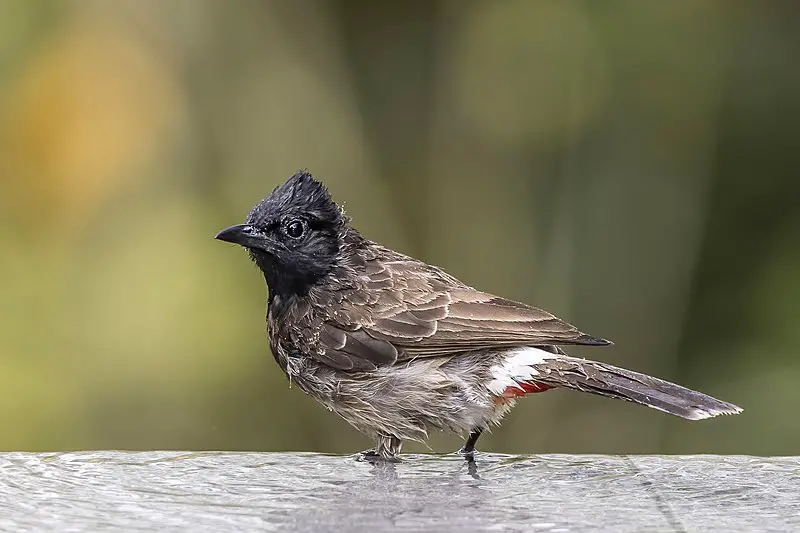
The Red-vented Bulbul is an impressive bird native to the Indian subcontinent, and has been introduced to regions around the world.
It belongs to the bulbul family of passerines and is a resident breeder in many countries including Sri Lanka, Burma, Bhutan and Nepal.
It also thrives in New Zealand, Argentina, Tonga and Fiji as well as parts of Samoa, Australia USA and Cook Islands.
This species has grey heads with white cheeks that contrast sharply against their black wings with bright red vent feathers which give them their name.
They typically live near woodland areas where they can forage for fruits or small insects on trees or bushes; this makes them useful birds for controlling insect populations naturally.
The male red-vented bulbuls are renowned songsters who sing out from treetops at dawn each day – adding some beautiful melodies to any garden.
Scientific classification:
| Kingdom | Animalia |
| Phylum | Chordata |
| Class | Aves |
| Order | Passeriformes |
| Family | Pycnonotidae |
| Genus | Pycnonotus |
| Species | P. cafer |
Also Featured In: Birds of Myanmar, Common Birds in the Cities
2. Lesser Frigatebird
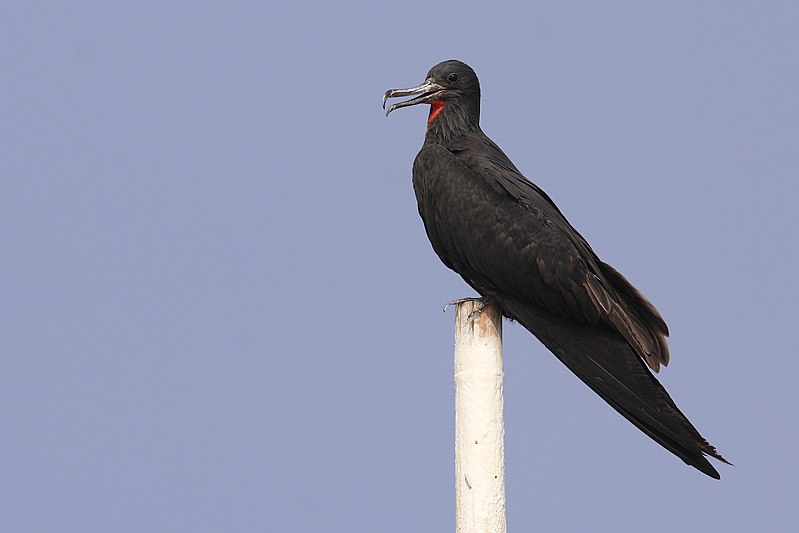
The Lesser Frigatebird is a seabird of the Fregatidae family and is known to be the smallest species in this group. It has brownish-black plumage, long narrow wings, and a forked tail.
This bird inhabits tropical and subtropical regions across the Indian Ocean, Pacific Ocean as well as off Brazil’s Atlantic Coast.
It feeds on fish taken from surface water or by plunge diving while flying low over shallow waters.
Its primary breeding grounds are located around islands with steep cliffs where it builds its nests out of twigs and grasses high up near ledges or crevices.
The lesser frigatebird can live for about 25 years due to their strong aerodynamic abilities which allow them to glide through air currents effortlessly thus conserving energy during flights that last days at a time.
Scientific classification:
| Kingdom | Animalia |
| Phylum | Chordata |
| Class | Aves |
| Order | Suliformes |
| Family | Fregatidae |
| Genus | Fregata |
| Species | F. ariel |
Also Featured In: Mauritius birds, Birds that Live in the Ocean
3. Pacific Swallow
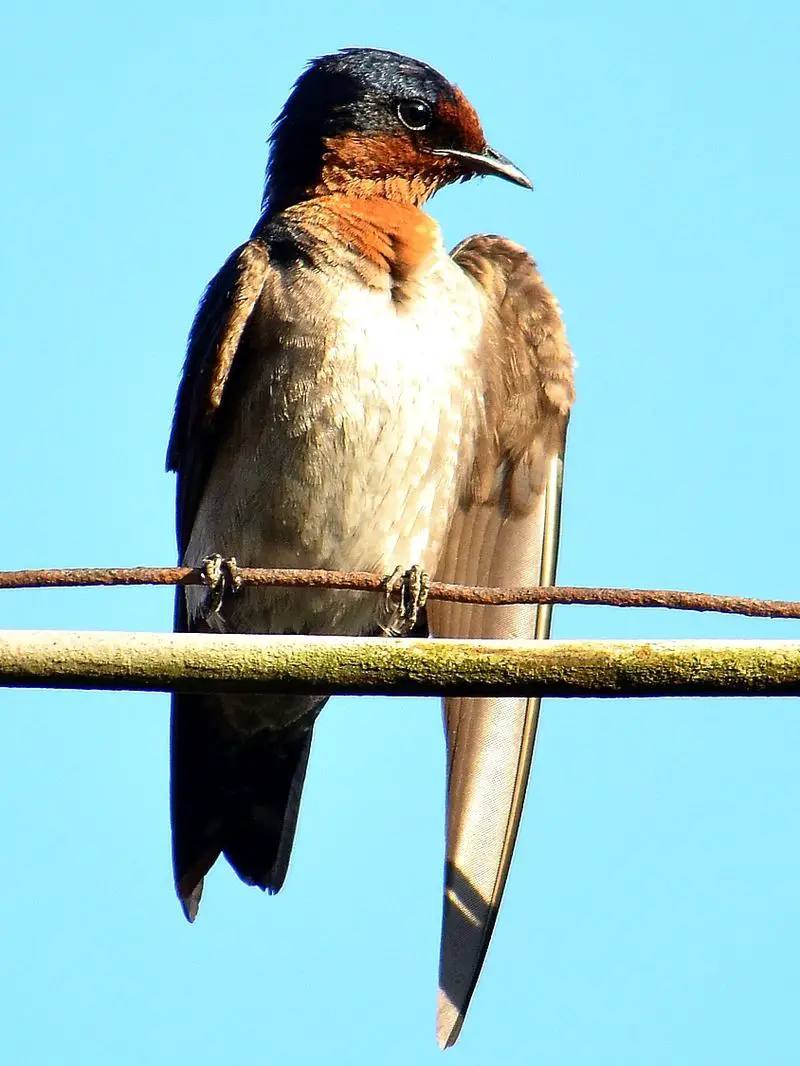
The Pacific Swallow is a small bird with glossy blue-black upperparts and white underparts. It has a short, forked tail and wings that are pointed at the tips.
This swallow typically breeds in tropical southern Asia and the islands of the south Pacific Ocean, although it is becoming more common on forested uplands away from coasts.
During breeding season they construct cup or saucer shaped nests made out of mud pellets in sheltered areas such as rock crevices, eaves or tree hollows.
The diet consists mostly of flying insects which they catch while flying low over water bodies like lakes or rivers during their migratory flights between nesting sites to feeding grounds.
They often travel together in flocks when migrating long distances but can sometimes be seen alone chasing after prey midair.
Scientific classification:
| Kingdom | Animalia |
| Phylum | Chordata |
| Class | Aves |
| Order | Passeriformes |
| Family | Hirundinidae |
| Genus | Hirundo |
| Species | H. tahitica |
Also Featured In: Brunei birds, Common Birds of Lombok
4. Kuhl’s Lorikeet
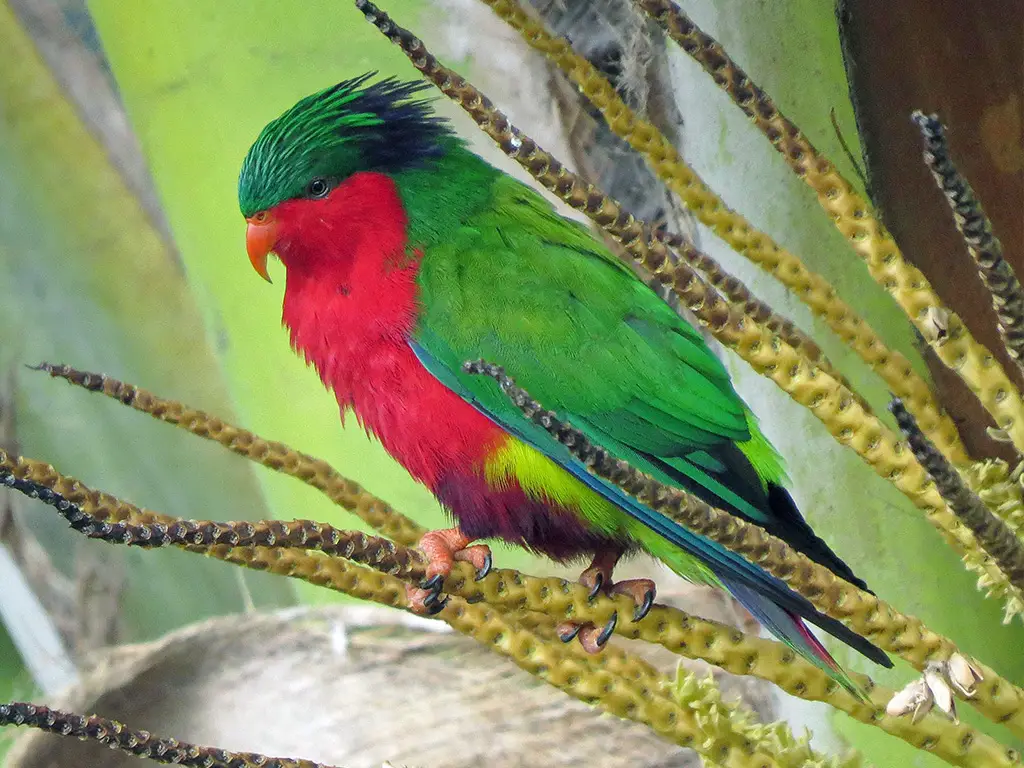
Kuhl’s lorikeet, also known as the Rimitara Lorikeet or Kura, is a species of colorful parrot native to islands across the South Pacific.
It was first discovered by German ornithologist Heinrich Kuhl in 1824 and subsequently named after him.
The bird has an array of vibrant colors that range from dark green on its back to yellowish-green underparts with bright orange markings on its head, wings and tail feathers.
Its diet consists mainly of nectar, pollen and fruits found in tropical areas such as palm trees and flowering shrubs.
Due to their friendly nature they have become popular pets amongst many people around the world who appreciate them for their intelligence and beautiful plumage.
Scientific classification:
| Kingdom | Animalia |
| Phylum | Chordata |
| Class | Aves |
| Order | Psittaciformes |
| Family | Psittaculidae |
| Genus | Vini |
| Species | V. kuhlii |
Also Featured In: Kiribati Birds,
5. Blue Lorikeet
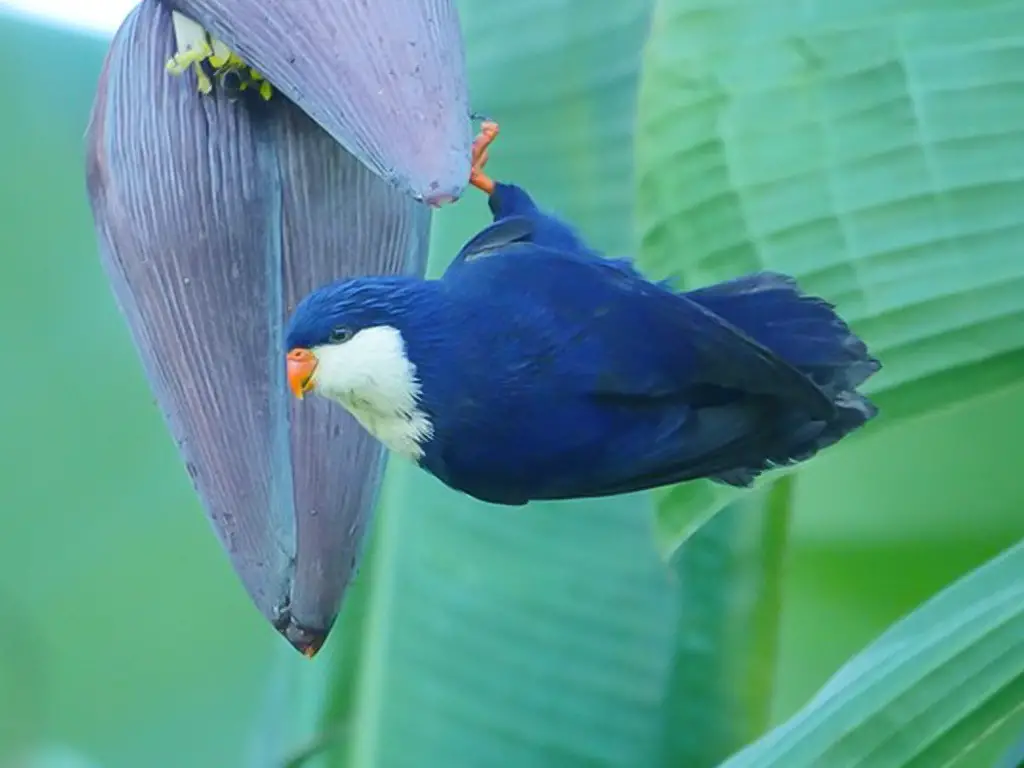
The Blue Lorikeet is a vibrant, eye-catching bird that can be found in French Polynesia and the Cook Islands. Its striking blue plumage has earned it several nicknames such as Tahiti lorikeet, Violet lorikeet and Indigo Lory.
Originally it was distributed across 23 islands around Tahiti but now its population is limited to eight: Motu, Manuae, Tikehau, Rangiroa Aratua Kaukura Apataki Aitutaki and possibly Harvey I.
This species of small parrot has short wings which make them excellent fliers although they are not able to travel long distances due to their size.
In terms of diet they mainly feed on nectar from flowers while also consuming fruits like bananas or melons when available – making them an incredibly important pollinator for native flora.
Scientific classification:
| Kingdom | Animalia |
| Phylum | Chordata |
| Class | Aves |
| Order | Psittaciformes |
| Family | Psittaculidae |
| Genus | Vini |
| Species | V. peruviana |
Also Featured In: Cook Islands birds,
6. Wandering Tattler
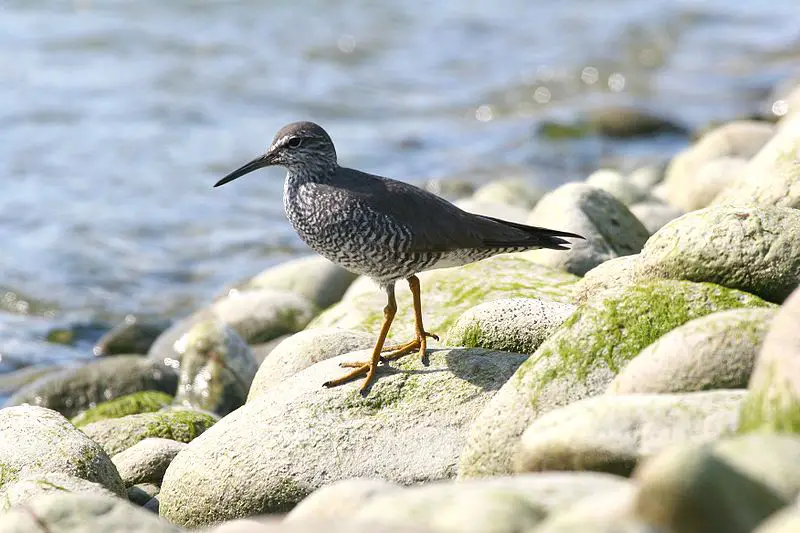
The Wandering Tattler is a medium-sized wading bird found in coastal areas throughout the world. It has unpatterned, greyish wings and back, as well as a scaly breast pattern that extends onto its belly.
Its closest relative is the Gray-tailed Tattler (Tringa brevipes). The species feeds on insects and crustaceans which they hunt along shorelines. They also take advantage of low tide to feed on exposed mudflats or sandbars.
During migration season these birds can be seen flying long distances over open ocean waters with their characteristic fluttering flight pattern before reaching land again to rest and refuel for another journey ahead.
Scientific classification:
| Kingdom | Animalia |
| Phylum | Chordata |
| Class | Aves |
| Order | Charadriiformes |
| Family | Scolopacidae |
| Genus | Tringa |
| Species | T. incana |
Also Featured In: Hawaii Big Island Birds You Should Know, Birds that Live in Sunshine Coast
7. Tahiti Petrel
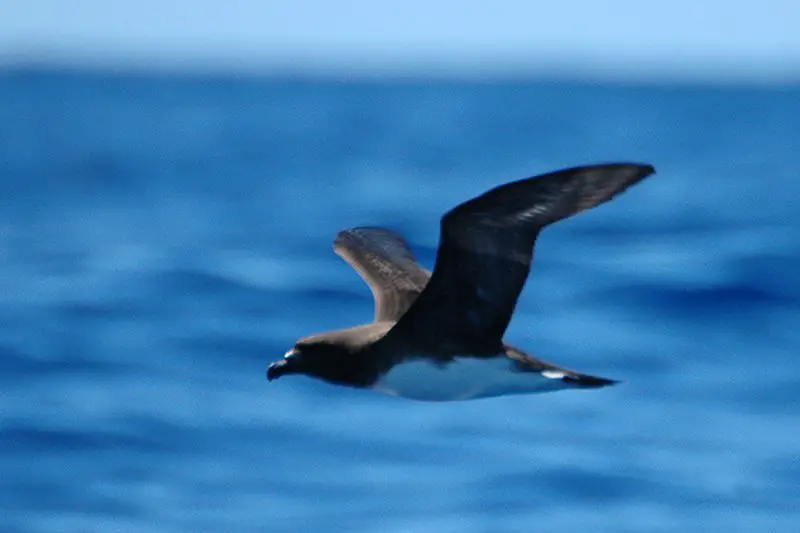
The Tahiti petrel is a species of seabird belonging to the family Procellariidae. It can be found in many countries, including American Samoa, Australia, Fiji, French Polynesia and New Zealand.
This pelagic bird spends its time on the open seas but nests in moist lowland forests or monsoon forest areas.
The Tahiti Petrel has grey upperparts with white underparts and distinctive black cap on top of their head that goes down around their eyes creating an eye mask look.
They have long wings which they use for soaring above high waves while hunting during night time hours as well as short bills meant for catching fish off the sea surface when diving underwater at daybreak.
Their diet consists mainly of squid and other small fishes such as anchovies and sardines making them important predators in marine ecosystems helping keep populations balanced out naturally without human interference.
Scientific classification:
| Kingdom | Animalia |
| Phylum | Chordata |
| Class | Aves |
| Order | Procellariiformes |
| Family | Procellariidae |
| Genus | Pseudobulweria |
| Species | P. rostrata |
Also Featured In: Guam Birds You Need to See,
8. Pomarea
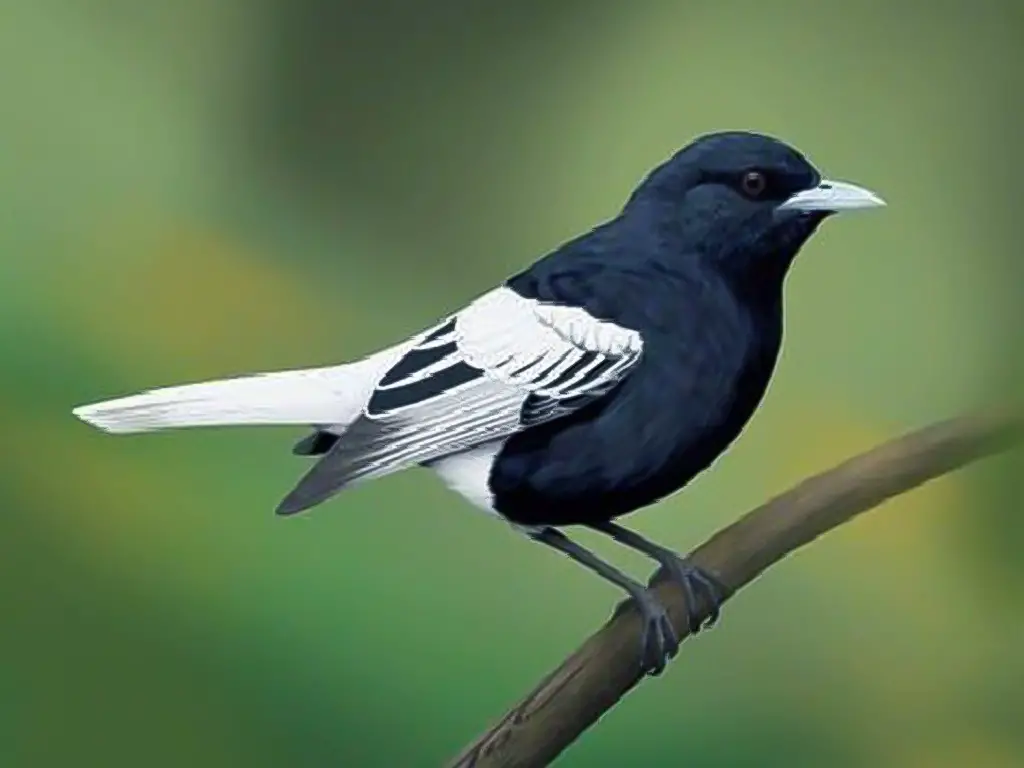
Pomarea is a genus of birds in the Monarchidae family, which are endemic to the islands of Polynesia. They range from 15-19 cm long and have distinct sexual dimorphism in their plumage.
The six extant species that make up this genus include P. nigra, P. cyanoxantha, P. maculata, P. wilsoni, P merensiana and possibly one extinct species; while some experts also recognize additional subspecies as separate species too.
These colorful birds mostly inhabit forests or scrublands in search for insects they feed on – making them an important part of local ecosystems by controlling insect population levels.
Scientific classification:
| Kingdom | Animalia |
| Phylum | Chordata |
| Class | Aves |
| Order | Passeriformes |
| Family | Monarchidae |
| Genus | Pomarea Bonaparte, 1854 |
9. Tahiti Swiftlet
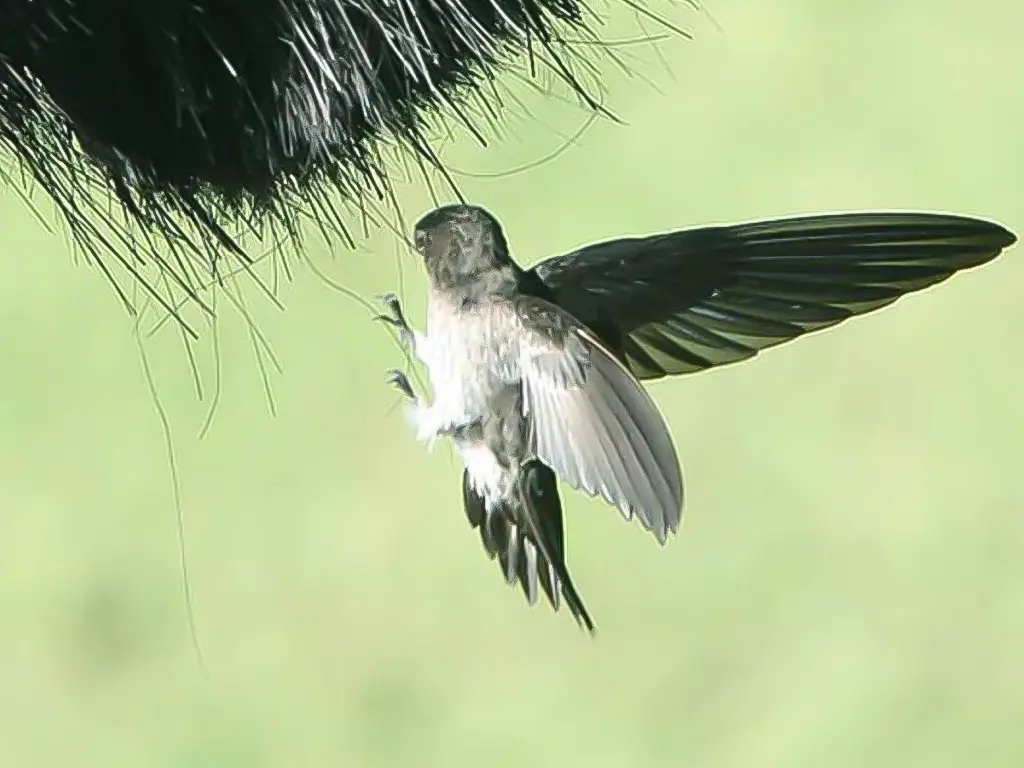
The Tahiti swiftlet is a species of bird endemic to the Society Islands in French Polynesia. It usually has a pale face and cannot be classified into any subspecies, making it monotypic in nature.
This swift can mainly be found on the islands of Tahiti and Moorea, where it lives its life within tree-covered areas.
These birds are small but fast fliers that feed mostly off flying insects like moths or beetles which they catch midair with their wide open mouths during flight.
They also build intricate nests made from saliva out of caves or crevices for breeding purposes.
The conservation status of this unique species is currently stable; however ongoing monitoring will ensure their long term survival within these beautiful islands.
Scientific classification:
| Kingdom | Animalia |
| Phylum | Chordata |
| Class | Aves |
| Order | Apodiformes |
| Family | Apodidae |
| Genus | Aerodramus |
| Species | A. leucophaeus |
Also Featured In: Swifts Species,
10. Chestnut-Breasted Mannikin
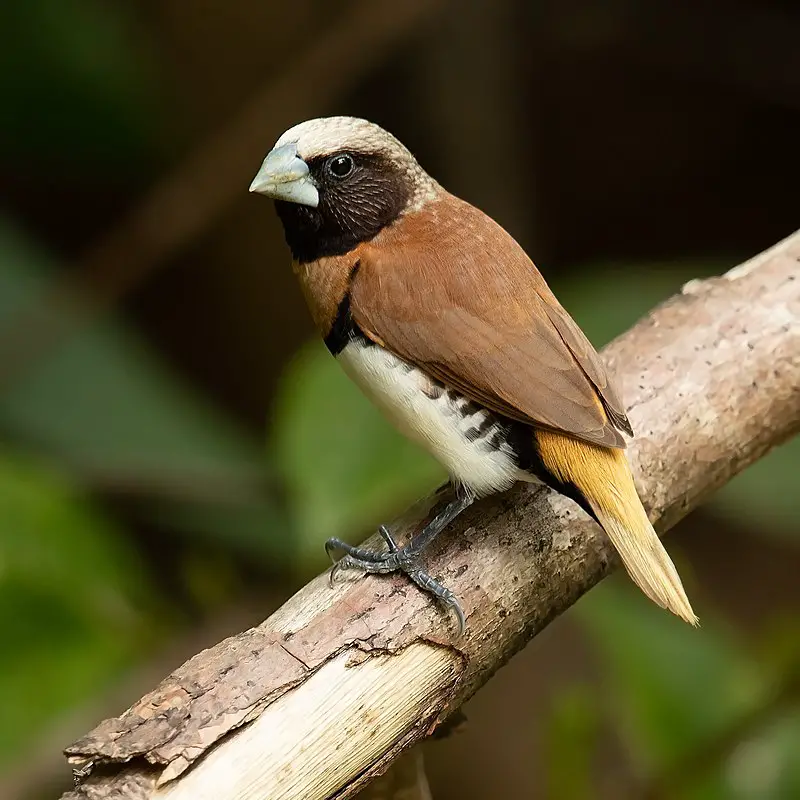
The chestnut-breasted mannikin, also called bully bird in Australia, is a small brown-backed munia with a black face and greyish crown and nape. It has a broad ferruginous breast bar on top of a white belly, making it a distinctive bird species.
The bird is found in various regions such as Australia, New Caledonia, Indonesia, and Papua New Guinea.
With its unique physical attributes and widespread habitat, the chestnut-breasted mannikin has caught the attention of birdwatchers around the world.
Its playful behavior and chirpy tweets make it a favorite companion among bird enthusiasts. Although this species has also been introduced to French Polynesia, it is primarily found in its natural range.
The chestnut-breasted mannikin is a charming bird, and its presence adds beauty to the diverse avian fauna of the world.
Scientific classification:
| Kingdom | Animalia |
| Phylum | Chordata |
| Class | Aves |
| Order | Passeriformes |
| Family | Estrildidae |
| Genus | Lonchura |
| Species | L. castaneothorax |
Also Featured In: Native Birds Of Mackay,
11. Tahiti Monarch
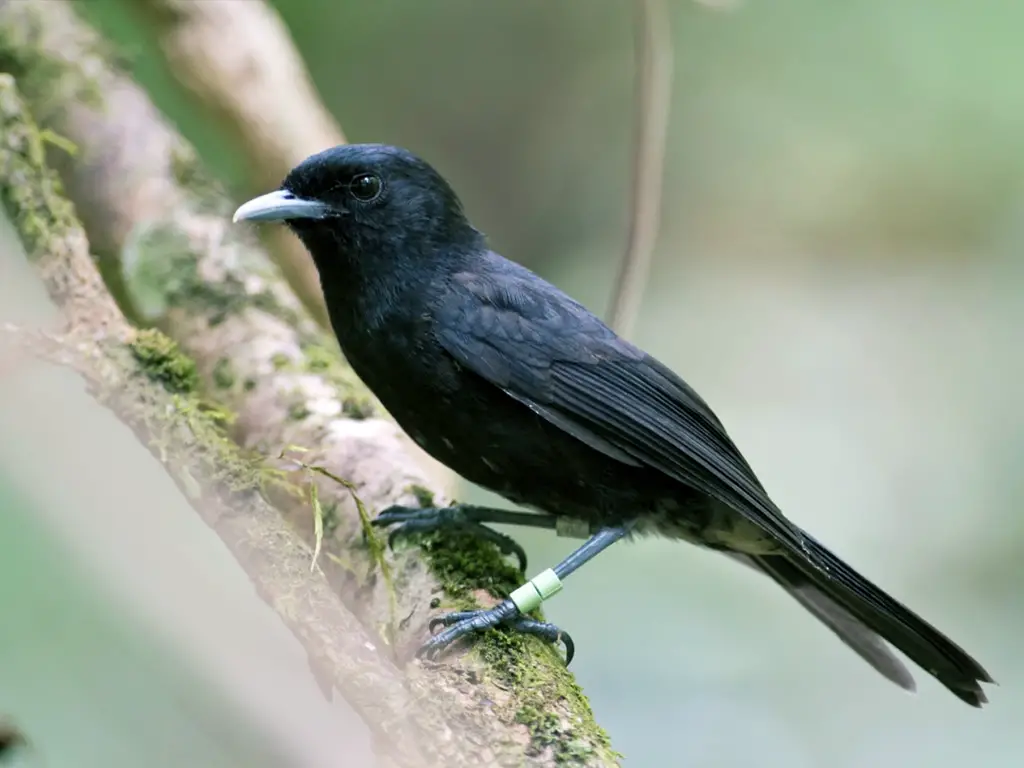
The Tahiti monarch, also known as Tahiti flycatcher, is a rare bird species that belongs to the monarch flycatcher family. This bird is only found in Tahiti, located in French Polynesia.
With a population of only 25 to 100 individuals, the Tahiti monarch is considered endangered. However, their population trend is increasing.
Originally classified under Muscicapa, the Tahiti monarch was one of the earliest birds to be recorded in French Polynesia.
Another species, the Maupiti monarch, was considered a subspecies of the Tahiti monarch, but is now treated as a separate species.
Scientific classification:
| Kingdom | Animalia |
| Phylum | Chordata |
| Class | Aves |
| Order | Passeriformes |
| Family | Monarchidae |
| Genus | Pomarea |
| Species | P. nigra |
12. Society Kingfisher
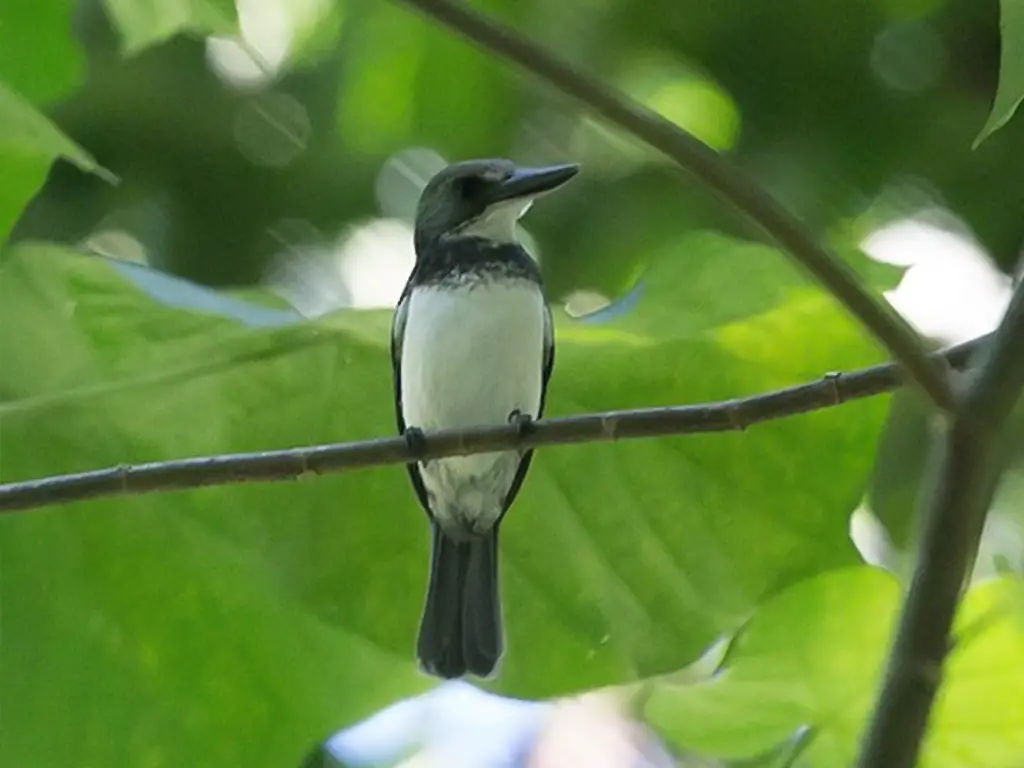
The Society kingfisher, also known as the Tahiti kingfisher, is a bird species found exclusively in the Society Islands of French Polynesia.
It belongs to the Alcedinidae family and typically inhabits subtropical or tropical moist lowland and montane forests.
The German naturalist Johann Friedrich Gmelin gave the bird its formal description in 1788.
Despite being a small bird, the Society kingfisher is distinctive for its bright and beautiful colors, including blue-green plumage and a bright orange beak.
It is also an important predator in its ecosystem, feeding on small invertebrates and small fish.
This endemic bird faces threats from habitat loss due to deforestation, and its population has declined in recent years, making it a priority for conservation efforts in the region.
Scientific classification:
| Kingdom | Animalia |
| Phylum | Chordata |
| Class | Aves |
| Order | Coraciiformes |
| Family | Alcedinidae |
| Subfamily | Halcyoninae |
| Genus | Todiramphus |
| Species | T. veneratus |
13. Grey-Green Fruit Dove
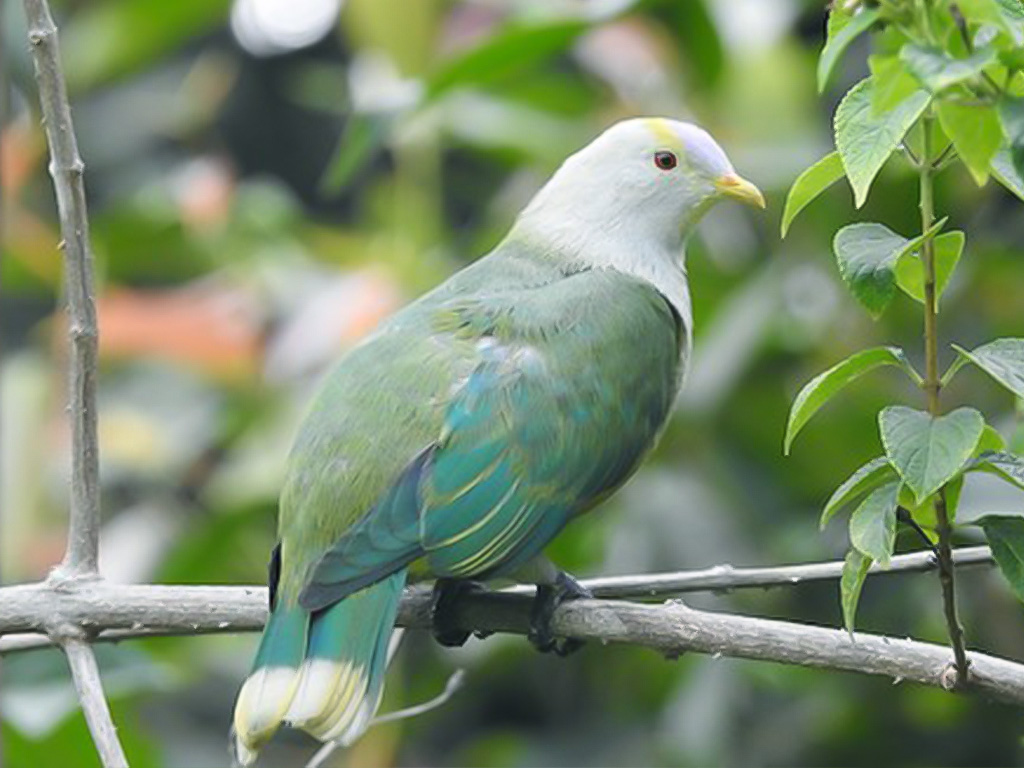
The Grey-green fruit dove is a bird belonging to the family Columbidae. It is native to the Society Islands in French Polynesia and lives in subtropical or tropical moist lowland forests.
Its unique hue blends grey and green colors and makes this species stand out. The bird was first described in 1789 by Johann Friedrich Gmelin, a German naturalist.
Due to its preference for fruit, the Grey-green fruit dove is also known for being a frugivore.
It is an endemic species and is not found in any other region. Being native to the islands of French Polynesia, it is considered an important symbol of the country’s biodiversity.
Despite its uniqueness, not much is known about its biology or behavior, as there is limited scientific research on this species.
Scientific classification:
| Kingdom | Animalia |
| Phylum | Chordata |
| Class | Aves |
| Order | Columbiformes |
| Family | Columbidae |
| Genus | Ptilinopus |
| Species | P. purpuratus |
14. Polynesian Imperial Pigeon
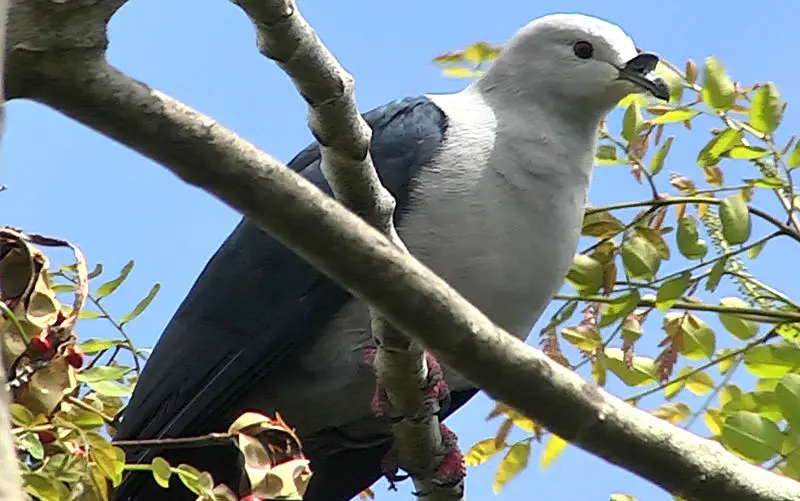
The Polynesian imperial pigeon is a unique, large bird species found exclusively in French Polynesia. It can grow up to 51 cm tall and has broad, rounded wings.
The bird also features a distinctive knob on its bill. Due to habitat loss, the Polynesian imperial pigeon is now considered a threatened species.
Its preferred habitat is subtropical or tropical moist lowland forest and subtropical or tropical moist montane forest.
This bird belongs to the family Columbidae and is known for its elegant and regal appearance. Its plumage is predominantly brown with a touch of white on its neck and wings.
As a native species of French Polynesia, conservation efforts need to be taken to protect the Polynesian imperial pigeon and its unique place in the region’s ecosystem.
Scientific classification:
| Kingdom | Animalia |
| Phylum | Chordata |
| Class | Aves |
| Order | Columbiformes |
| Family | Columbidae |
| Genus | Ducula |
| Species | D. aurorae |
15. Tahiti Rail
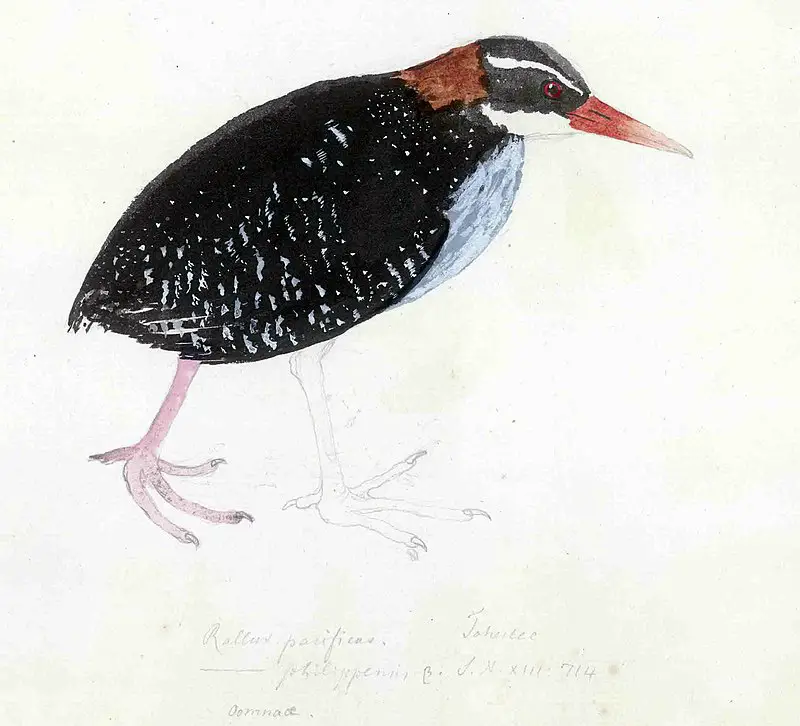
The Tahiti rail was a now-extinct species of rail that inhabited Tahiti. It was discovered during James Cook’s second voyage around the world, and was both illustrated and described by Georg Forster and Johann Reinhold Forster.
Sadly, no specimens of this bird have been preserved. Despite this, it remains interesting to ornithologists and bird enthusiasts alike, who continue to study and learn more about it through historical records and research.
Scientific classification:
| Kingdom | Animalia |
| Phylum | Chordata |
| Class | Aves |
| Order | Gruiformes |
| Family | Rallidae |
| Genus | Hypotaenidia |
| Species | †H. pacifica |
16. Black-Fronted Parakeet
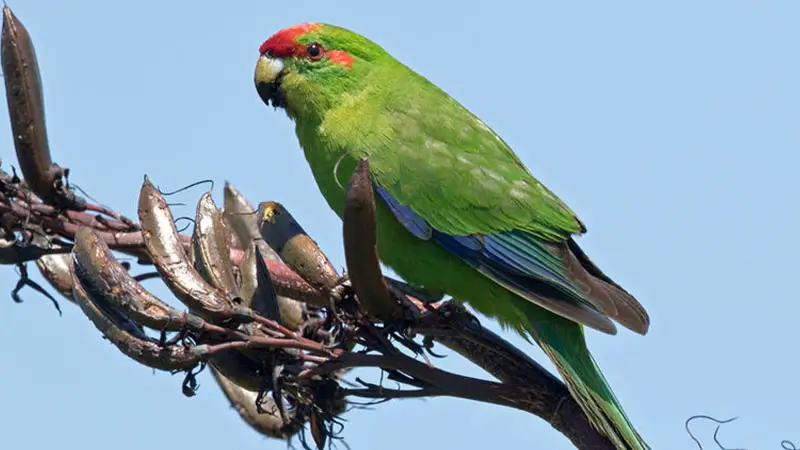
The Black-fronted parakeet, also known as the Tahiti parakeet, was a species of bird that was endemic to Tahiti in the Pacific. It was called ‘ā’ā by the natives, which simply means “parrot”.
The bird was discovered during James Cook’s first voyage in 1769, and there are currently only three known specimens of the species in Liverpool and the Walter Rothschild Zoological Museum in Tring.
Despite its scarcity, the bird was formerly a common sight on the island, but it eventually became extinct due to habitat loss and hunting.
The Black-fronted parakeet was a small bird with green feathers and a black forehead.
Sadly, its loss is a reminder of the importance of conservation efforts to protect endangered species.
Scientific classification:
| Kingdom | Animalia |
| Phylum | Chordata |
| Class | Aves |
| Order | Psittaciformes |
| Family | Psittaculidae |
| Genus | Cyanoramphus |
| Species | †C. zealandicus |
17. Marquesan Ground Dove
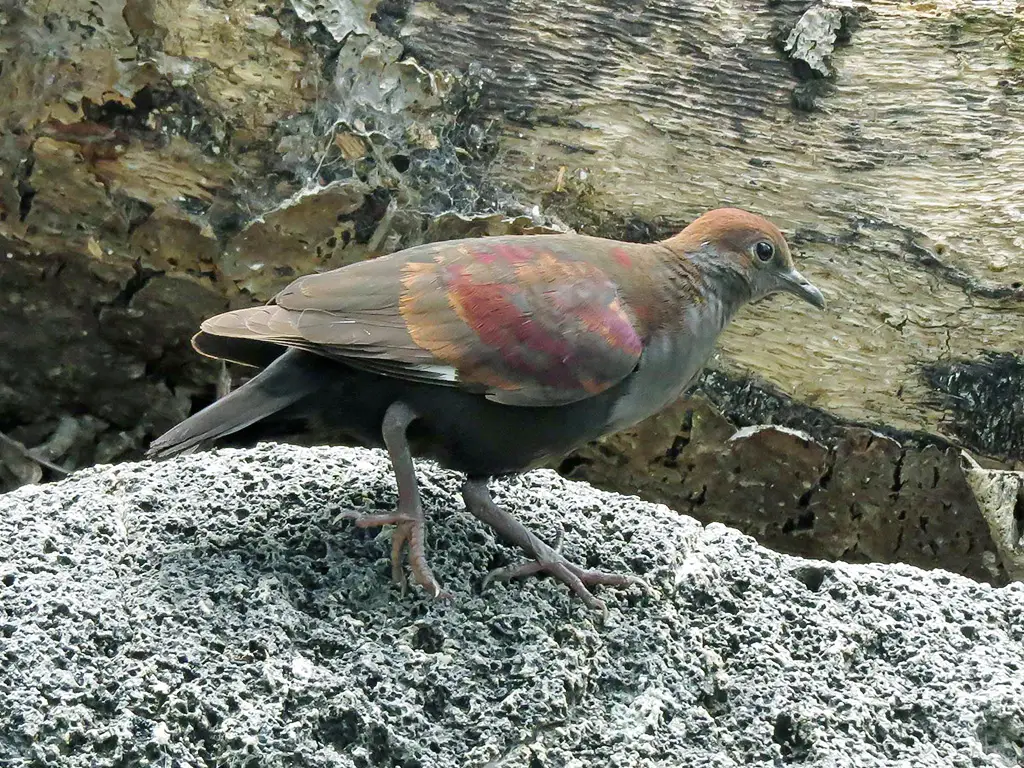
The Marquesan ground dove is a bird found only in French Polynesia. It belongs to the family Columbidae and is at home in subtropical dry forests and moist shrubland.
This species was previously listed as endangered by the IUCN. Interestingly, the Marquesan ground dove was once classified in the genus Alopecoenas, but its official name was changed in 2015.
Scientific classification:
| Kingdom | Animalia |
| Phylum | Chordata |
| Class | Aves |
| Order | Columbiformes |
| Family | Columbidae |
| Genus | Pampusana |
| Species | P. rubescens |
18. Rimatara Reed Warbler
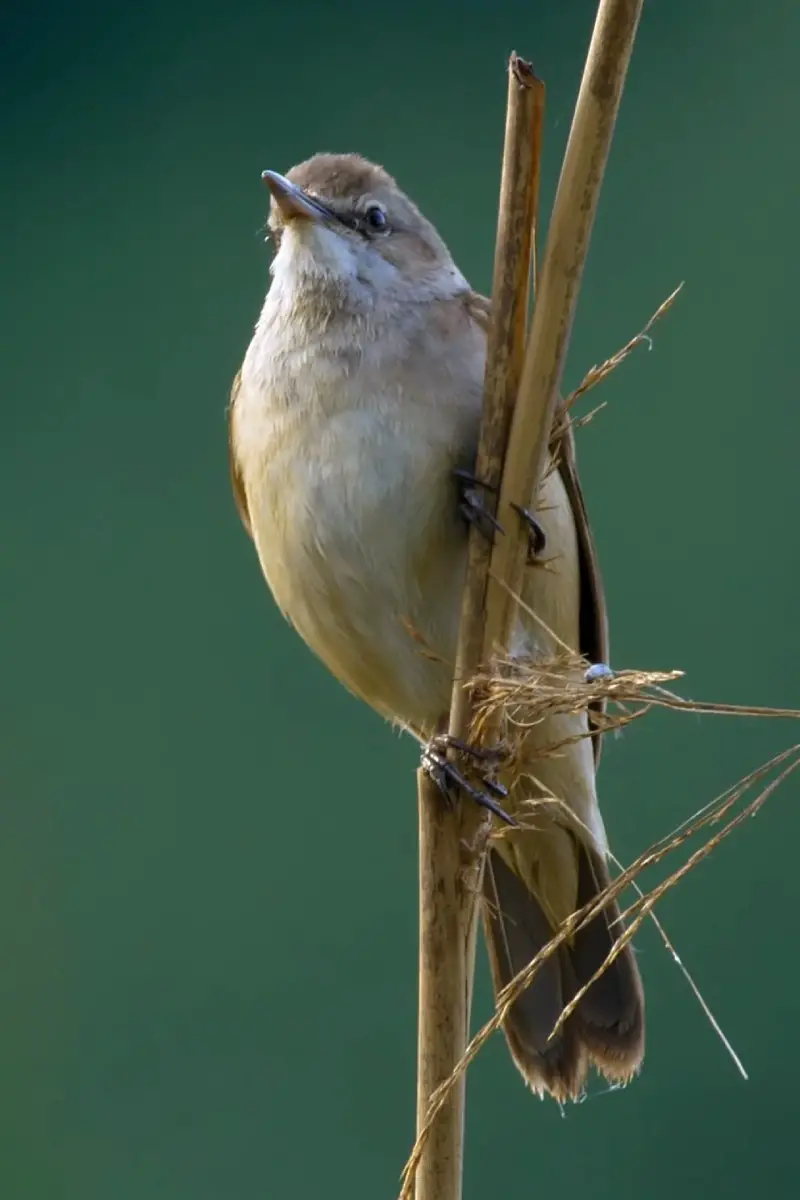
The Rimatara reed warbler is a critically endangered species of bird that can only be found in Rimatara, which is located in French Polynesia.
This particular species of bird belongs to the Old World warbler family known as Acrocephalidae.
The Rimatara reed warbler prefers to live in subtropical or tropical dry forests and swamps. Sadly, due to its extremely limited distribution, this bird population has drastically decreased over time.
The International Union for Conservation of Nature (IUCN) lists it as critically endangered, making conservation efforts a top priority to prevent this species from becoming extinct.
Overall, the Rimatara reed warbler serves as a reminder of the importance of protecting and preserving endangered species.
Scientific classification:
| Kingdom | Animalia |
| Phylum | Chordata |
| Class | Aves |
| Order | Passeriformes |
| Family | Acrocephalidae |
| Genus | Acrocephalus |
| Species | A. rimitarae |
19. Moorea Reed Warbler
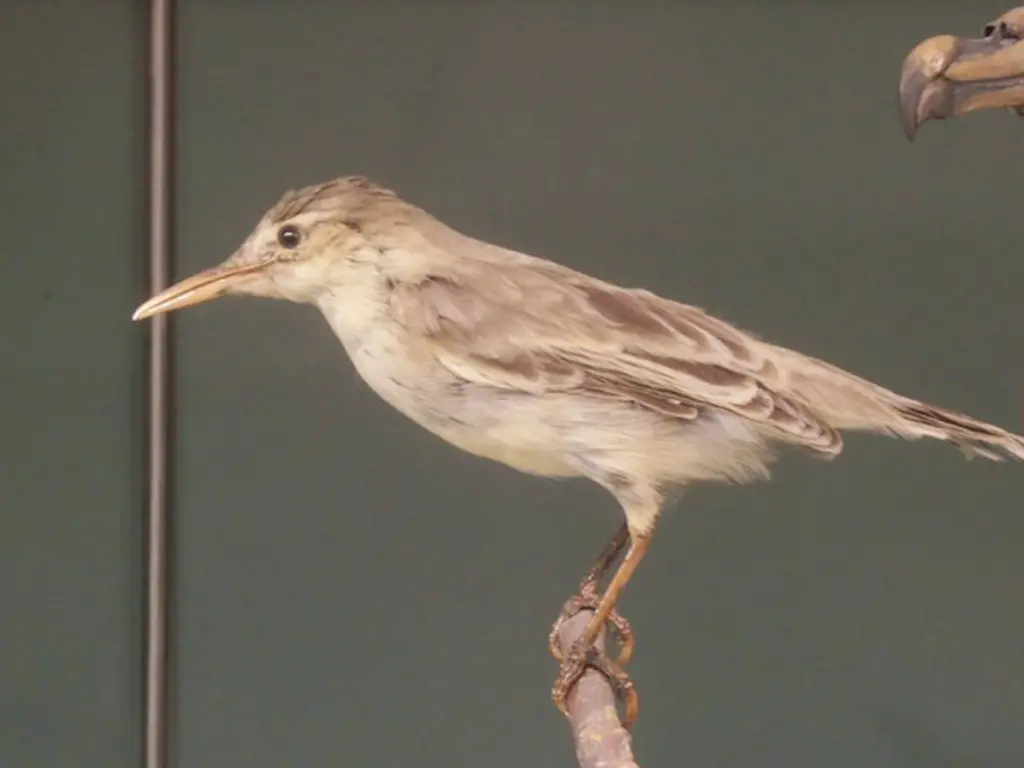
The Moorea reed warbler is a songbird found only on the island of Moorea in the Society Islands.
Formerly classified as a subspecies of the Tahiti reed warbler, it is now recognized as a separate species in the marsh warbler family Acrocephalidae.
This bird can be found in second-growth forests on the island. It is a small bird with a unique long beak, and its distinctive song is often heard in its habitat.
As an endemic species, the Moorea reed warbler is vulnerable to habitat loss and degradation, making conservation efforts important to its survival.
Scientific classification:
| Kingdom | Animalia |
| Phylum | Chordata |
| Class | Aves |
| Order | Passeriformes |
| Family | Acrocephalidae |
| Genus | Acrocephalus |
| Species | A. longirostris |